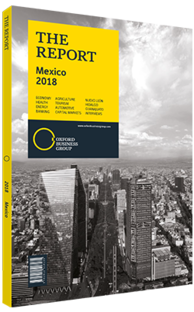Mexico's peso volatility affects businesses, investors and individuals
The Mexican peso has long been viewed as the bellwether of emerging market currencies and a signal of overall market sentiment. While it is the second-most traded currency among emerging markets, after the Chinese renminbi, the peso is considered the more accessible of the two as it can be traded around the clock. A period of stability when the peso equalled roughly MXN13:$1 from mid-2009 to the end of 2014 has been followed by the currency losing significant value in recent years, reaching a record low of nearly MXN22:$1 after Donald Trump was inaugurated as US president in January 2017. Thanks to intervention in the form of interest rate hikes and hedging auctions by Banco de México (Banxico), the central bank, and on the back of a weaker dollar, the peso strengthened to between MXN17:$1 and MXN18:$1 between June and September 2017. However, the peso broke the MXN20:$1 barrier once again in June 2018 amid growing internal and external uncertainty.
Springtime Slide
The peso depreciated by 12.7% against the dollar in the two months to mid-June. This was the result of a combination of factors, including capital withdrawals from emerging markets due to a strengthening dollar, the anticipation of Mexico’s presidential election on July 1, 2018, ongoing renegotiation of the North American Free Trade Agreement, and the imposition of import tariffs on steel and aluminium products by the US of 25% and 10%, respectively.
Although the peso is a free-floating currency, the central bank occasionally intervenes to help stabilise its performance. The board of Banxico unanimously decided to raise the benchmark interest rate by 0.25 percentage points to 7.75% on June 21, following previous decisions in December 2017 and February 2018 that brought the rate to a nine-year high. The action was taken in part to rein in inflation to the bank’s 3% target annual rate, as well as help buoy the peso’s value.
Hedging Auctions
To address the pressure the peso experienced after the election of Donald Trump, in February 2017 Banxico implemented a new foreign exchange (forex) mechanism known as currency hedges to limit the sharp depreciation of the peso. The mechanism involves the auction in pesos of non-deliverable forwards, which are essentially the sale of foreign currency reserves in dollars to provide liquidity to the forex market. In an interview with OBG (see Banking chapter), Alejandro Díaz de León Carrillo, governor of the central bank, said, “The hedging mechanism is an instrument to inject liquidity into the exchange market. It has to be unanimously voted upon by the bank’s exchange commission when it is identified that liquidity levels are strained.” By June 2018 Banxico had used the measure three times in combination with interest rate increases.
Uneven Performance
Looking at 28 issuers on the Standard & Poor’s/Bolsa Mexicana de Valores Índice de Precios y Cotizaciones, and converting profits into pesos as a share of total income, it is evident that 18 were negatively affected by depreciation. Industrial giant Grupo Alfa and infrastructure firm Pinfra both reported forex losses in excess of 10% in the first quarter of 2018, while other large businesses, such as CH Industries, Simec, Genomma Lab, Arca Continental, Grupo Aeroportuario del Centro Norte and Grupo Carso, saw losses of around 1.5%. The largest forex gains as a proportion of total income, meanwhile, were experienced by energy firm IE nova at 15.8%, telecoms provider América Móvil (9%), Grupo Aeroportuario del Pacífico (4.5%), broadcaster Televisa (4.4%) and Grupo Aeroportuario del Sureste (1.1%). Nonetheless, on average, the group posted 9.7% year-on-year growth in sales and a 3.6% rise in pre-tax earnings, demonstrating expansion despite forex pressures. Further depreciation could increase pressure on businesses and consumers that import products from abroad that are priced in a currency other than pesos. However, sectors with a high percentage of costs in pesos and a large share of income in dollars, such as mining, food and beverage, and tourism, stand to benefit.
You have reached the limit of premium articles you can view for free.
Choose from the options below to purchase print or digital editions of our Reports. You can also purchase a website subscription giving you unlimited access to all of our Reports online for 12 months.
If you have already purchased this Report or have a website subscription, please login to continue.

